Exciting times for the exoplanet field. The announcement of the first million-plus dollar world is only days to weeks to months or at most a year or two away, and in the interim, the planet census keeps expanding.
At the same time, however, all the new planets are accompanied by a certain creeping degree of frustration. I have a feeling that these worlds, and especially the super-Earths, will prove to be even more alien than is generally supposed. Artist impressions do a good job when it comes to gray and airless cratered surfaces, but are necessarily inaccurate or impoverished or both in the presence of masses more than a few tenths that of Earth. And because of the distances involved, we won’t be getting the really satisfying images any time soon.
With my provincial day-to-day focus on Gl 876, Gl 581, HD 80606 et al., I tend to forget that we’ve got a full-blown planetary system right here in our back yard. It caught me by surprise, months after the fact, and via a thoroughly tangential channel, that a sober-minded case can be made for the presence of methane-based life on Titan. In fact, a detailed case has been made, complete with specific predictions, and, startlingly, those predictions now seem to have been confirmed.
In 2005, Chris McKay (whose office was just down the hall when I worked at NASA Ames’ Planetary System Branch) wrote an Icarus paper with Heather Smith proposing that methanogenic life might be widespread on Titan. McKay and Smith argue that one macroscopic consequence of such life would be a depletion of ethane, acetylene, and molecular hydrogen in Titan’s near-surface environment. Recent work seems to indicate that all three compounds are indeed depleted, which is very interesting indeed.
The details, and an assessment of the odds are a topic for another post. The simple fact that Titan is in the running at all is absolutely remarkable. Toto, I’ve a feeling we’re not on Mars anymore. Methane-based life in the Saturnian system would seemingly stand a far higher chance of stemming from a completely independent genesis. If Titan has managed to put together a biosphere, then there could very well be more life-bearing planets in the Galaxy than there are people.
The prospect of widespread life on Titan brings to mind the descent of the Huygens probe on January 14, 2005. I remember wondering, in the days running up to the landing, what the probe was going to see, and thinking that it was a once-in-a-lifetime moment of anticipation. Titan is the only world in our Solar System in which there was seemingly a chance, albeit very slim, of having a genuinely world-altering scene unfold upon touchdown. I knew that in all likelihood, the scene was likely going to look something like a cross between the Viking and Venera panoramas, but I couldn’t quite squelch that lotto-player’s like expectation that pictures of a frigid silurian jungle would be radioed back across light hours of space…
As everyone knows, there was no golden ticket in the chocolate bar, but might we still have a chance to see something really exotic when the next probe touches down?
It’s always seemed to me that the relatively mundane ground-level view at the Huygen’s landing site was somewhat at odds with the electrifyling promise implicit in the probe’s descent sequence. From 150 kilometers up, the haze is just starting to part — the view is not unlike the one that Percival Lowell had through his telescope of Mars. Faint dusky markings that one can connect in the mind’s eye to just about anything:
From 20 kilometers up, a wealth of detail is visible. Alien rivers, shorelines, islands?
The Huygen’s signal was extremely weak. The images arrived in a jumble, with Earth’s largest radio telescopes straining to hear them. It’s interesting to imagine what the level of anticipation might have reached had we known of the atmospheric depletions, and had the images arrived in real time as the probe drifted down toward the surface. Here’s the view from six kilometers up. Think of the looking out the window of a Jetliner several minutes after the start of descent from cruising altitude:
From 2 kilometers up:
From .6 kilometers up:
From a mere 200 meters altitude:
What if we carry out the same exercise and land a probe at a random spot on Earth? To roughly 1-sigma confidence, we’d come in for a splashdown somewhere in the ocean. Out of sight of land, no macroscopic life visible, just water, clouds and blue sky, and just like Huygen’s landing on Titan, a disappointment with respect to what might have been…
So I decided to wrap up the post by forcing the hand of chance. Using true random numbers (generated, appropriately enough by random.org through the use of Earth’s own atmospheric noise) I drew a single random location on the surface of a sphere, and calculated the corresponding longitude and latitude. The result?
-26.478972 S, 132.022361 E.
Google Maps makes it possible to drift in like Huygens for a landing sequence at any spot on Earth. The big picture, of course, is completely familiar, so the suspense is heightened in this case by successively zooming out.
The next scene, which is roughly a mile on a side, is quite readily set into the mental context. The random spot is in the Australian outback. Red dust, scattered rocks, scrub brush, spindly trees, and most evocatively, a building, a cul-de-sac, and a lonely stretch of dirt road bisecting the lower right corner of the view. Of course, had the probe come in a few decades ago, the scene would be no less tantalizing than what we had from Huygens at similar altitude. Those could easily be boulders, not treetops.
Aside from the roads, at a scale similar to where Titan was first revealed, Titan holds out, if anything, more promise than -26.478972 S, 132.022361 E:
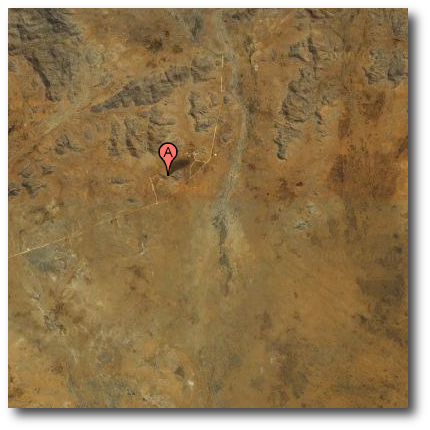
To set context, one can zoom all the way out. By coincidence, -26.478972 S, 132.022361 E is not far from the zone peppered by the reentry of Skylab on 11 July 1979, which ranged from 31° to 34°S and 122° to 126°E.
With a simulated Earth landing, we’re allowed to cheat, and get the full scoop on our landing spot. This is as simple as enabling geo-tagged photos and Wikipedia entries:
The wikipedia links are here and here. -26.478972 S, 132.022361 E is just over a rise from a solar power station on the Anangu Pitjantjatjara Yankunytjatjara local government area.
And imagine a probe touching down just in time to record this scene:
Image source.

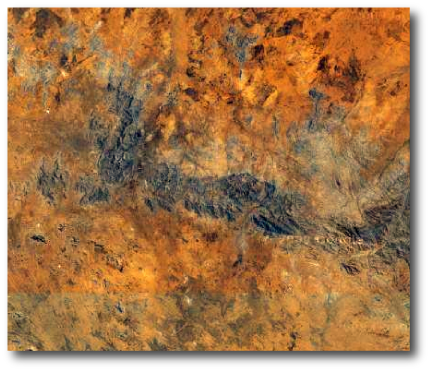
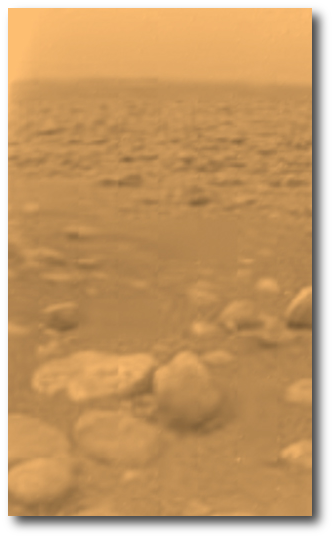
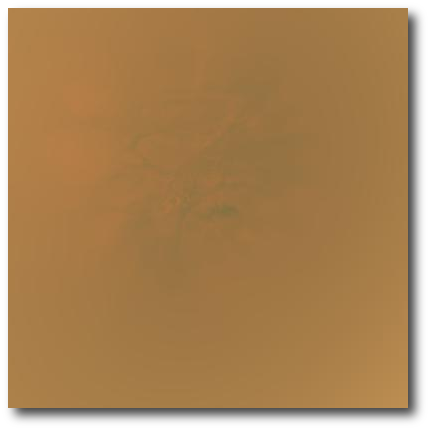
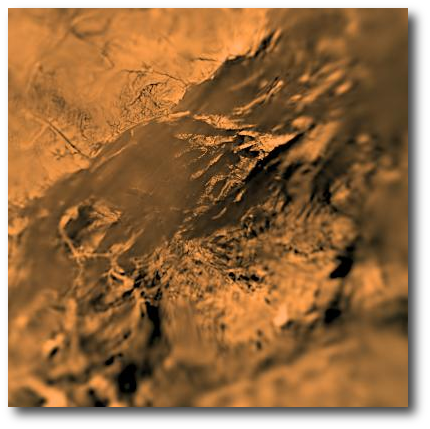
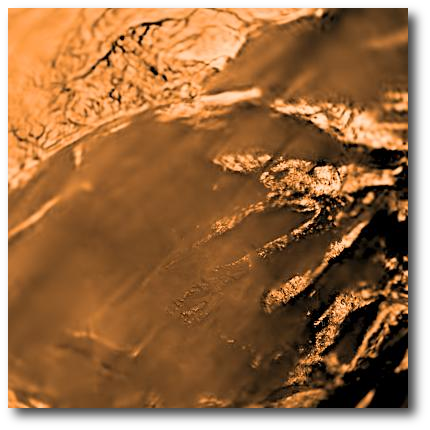
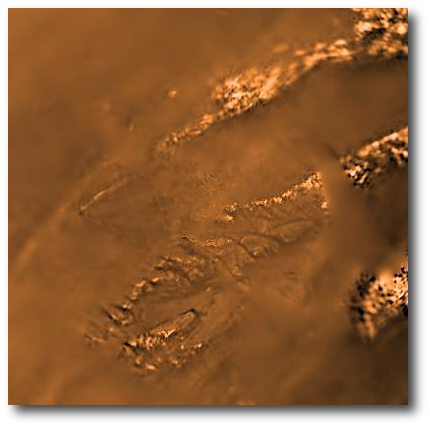
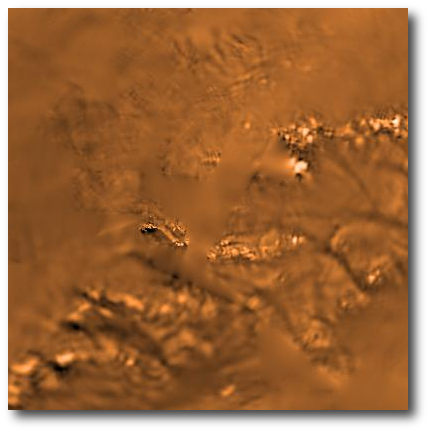
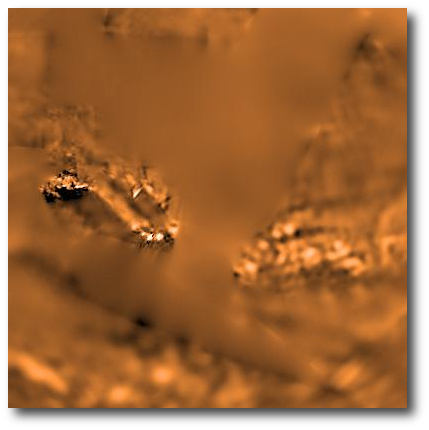
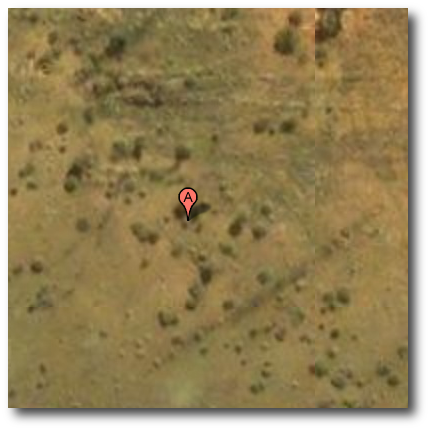
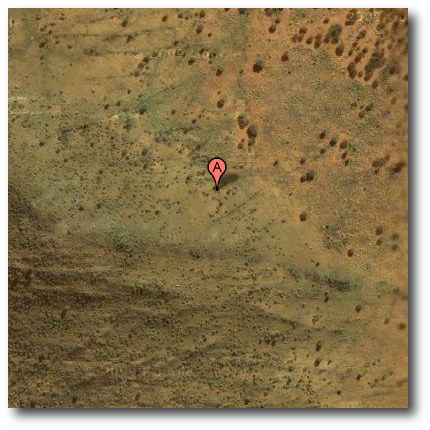
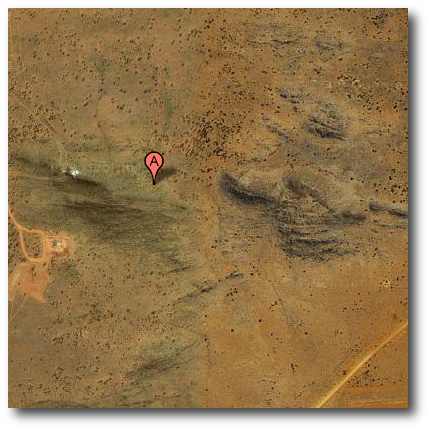
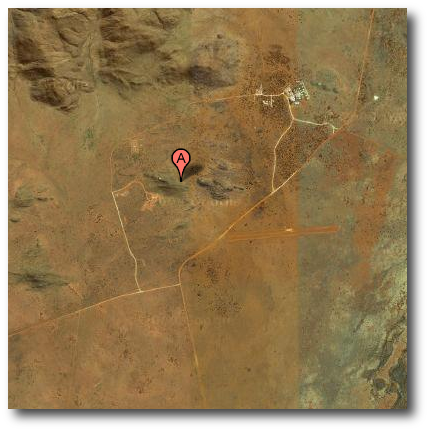

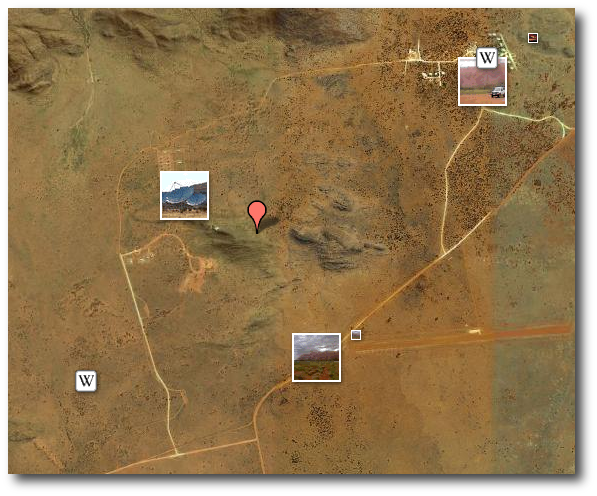
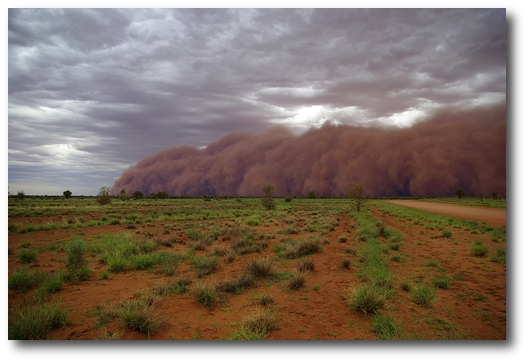
Yes, we are getting Sooo Closeeee to finding out whether there is life away from the earth or not. What an exciting time we will be seen to have live in, no matter what the answer.
I was tentatively hoping for a slightly more interesting view when the probe touched down on Titan. After all, the Mars landers are always targeted at safe boring flat plains as far away from interesting geology as you can get, while on Titan we weren’t deliberately not aiming at the interesting stuff. Ah well, it was a long shot anyway.
Pingback: » A Probe’s Descent to Titan and Earth arbesman.net
Pingback: Populär Astronomi - » Titan debuterar i Sveriges solsystem
I’m willing to bet that there are no kangaroos on Titan.
The images of Titan were exhilarating! Any place where where humans have not scathed, would be fascinating. Huygen was an unprecedented voyage and landing. It should have been pasted on all the news channels, and the world should have rejoiced in its accomplishment. These were also the sentiments of Carolyn Porco…the image specialist for the Titan mission. T
Titan may have methane based life..but I’m waiting for the tell-tell sign of excessive methane coming from a far away exo-planet!